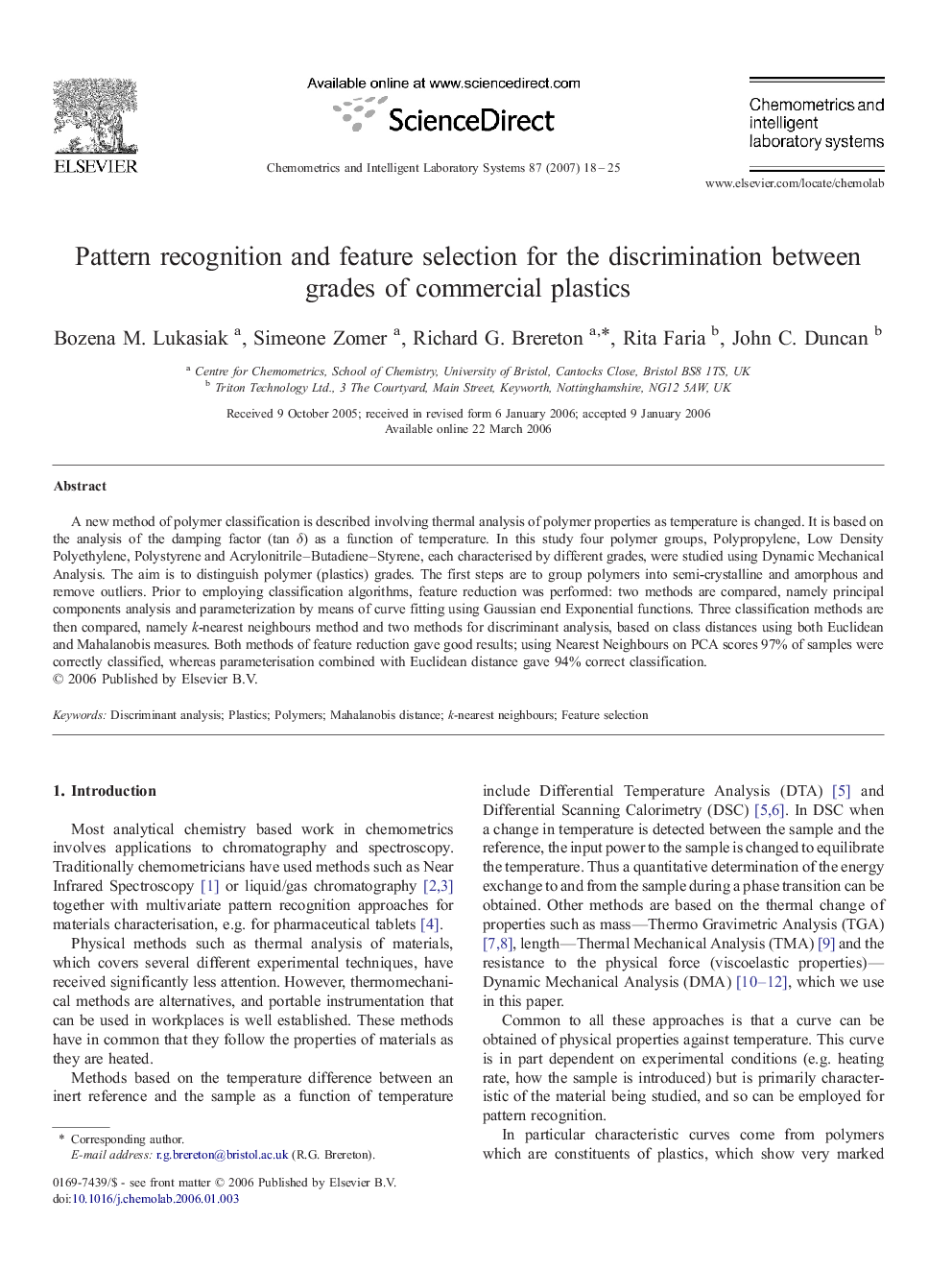| Article ID | Journal | Published Year | Pages | File Type |
|---|---|---|---|---|
| 1180538 | Chemometrics and Intelligent Laboratory Systems | 2007 | 8 Pages |
Abstract
A new method of polymer classification is described involving thermal analysis of polymer properties as temperature is changed. It is based on the analysis of the damping factor (tan δ) as a function of temperature. In this study four polymer groups, Polypropylene, Low Density Polyethylene, Polystyrene and Acrylonitrile-Butadiene-Styrene, each characterised by different grades, were studied using Dynamic Mechanical Analysis. The aim is to distinguish polymer (plastics) grades. The first steps are to group polymers into semi-crystalline and amorphous and remove outliers. Prior to employing classification algorithms, feature reduction was performed: two methods are compared, namely principal components analysis and parameterization by means of curve fitting using Gaussian end Exponential functions. Three classification methods are then compared, namely k-nearest neighbours method and two methods for discriminant analysis, based on class distances using both Euclidean and Mahalanobis measures. Both methods of feature reduction gave good results; using Nearest Neighbours on PCA scores 97% of samples were correctly classified, whereas parameterisation combined with Euclidean distance gave 94% correct classification.
Keywords
Related Topics
Physical Sciences and Engineering
Chemistry
Analytical Chemistry
Authors
Bozena M. Lukasiak, Simeone Zomer, Richard G. Brereton, Rita Faria, John C. Duncan,
